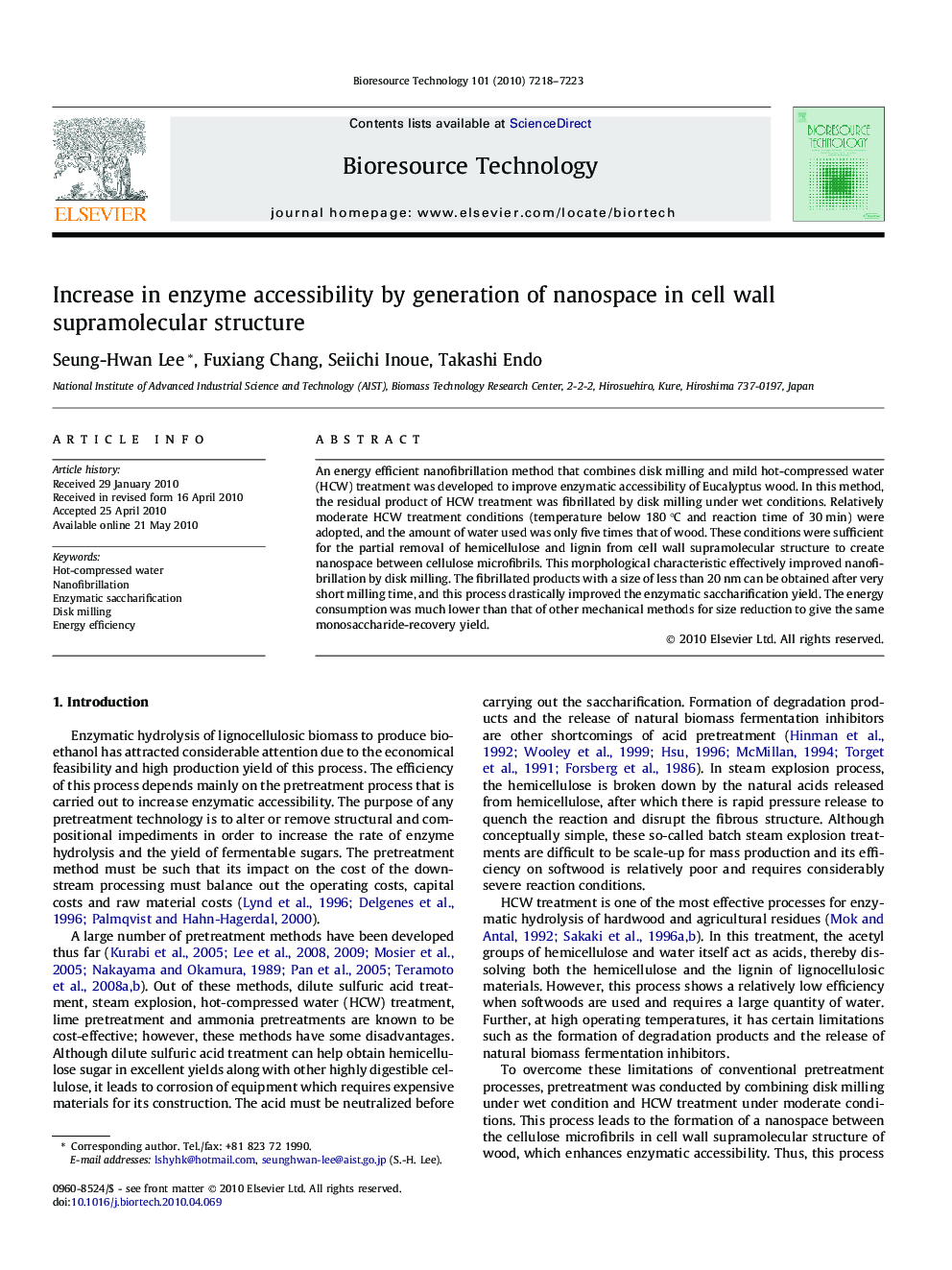| Article ID | Journal | Published Year | Pages | File Type |
|---|---|---|---|---|
| 682802 | Bioresource Technology | 2010 | 6 Pages |
An energy efficient nanofibrillation method that combines disk milling and mild hot-compressed water (HCW) treatment was developed to improve enzymatic accessibility of Eucalyptus wood. In this method, the residual product of HCW treatment was fibrillated by disk milling under wet conditions. Relatively moderate HCW treatment conditions (temperature below 180 °C and reaction time of 30 min) were adopted, and the amount of water used was only five times that of wood. These conditions were sufficient for the partial removal of hemicellulose and lignin from cell wall supramolecular structure to create nanospace between cellulose microfibrils. This morphological characteristic effectively improved nanofibrillation by disk milling. The fibrillated products with a size of less than 20 nm can be obtained after very short milling time, and this process drastically improved the enzymatic saccharification yield. The energy consumption was much lower than that of other mechanical methods for size reduction to give the same monosaccharide-recovery yield.
